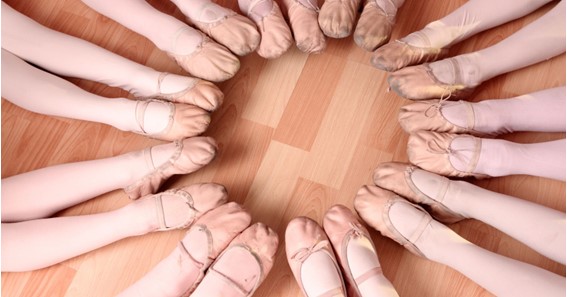Are you curious to know what is sickled foot? You have come to the right place as I am going to tell you everything about sickled foot in a very simple explanation. Without further discussion let’s begin to know what is sickled foot?
When it comes to the human body, even the smallest deviations from the norm can lead to significant discomfort and complications. One such condition that affects the feet is known as “sickled foot.” In this blog post, we will explore what sickled foot is, its causes, symptoms, and available treatment options, shedding light on this lesser-known foot abnormality.
What Is Sickled Foot?
Sickled foot, also referred to as pes adductus or metatarsus adductus, is a foot deformity characterized by an inward curve or bending of the foot, particularly the forefoot. When observed from above, the foot appears to be curved inwards, resembling the shape of a sickle, hence the name.
Causes:
The exact causes of sickled foot are not always clear, but it is believed to be a result of various factors, including:
- Intrauterine positioning: While in the womb, the positioning of the fetus can contribute to the development of foot abnormalities. Conditions such as limited space, uterine constraint, or abnormal pressure on the feet can lead to the formation of a sickled foot.
- Genetic factors: Some studies suggest that certain genetic factors may predispose individuals to develop sickled foot. If there is a family history of foot abnormalities, the likelihood of developing the condition may increase.
Symptoms:
Sickled foot may present with a range of symptoms, which can vary in severity. Common signs and symptoms associated with this condition include:
- The inward curve of the foot: The most apparent sign is the noticeable inward curve of the forefoot when viewed from above. This can affect one or both feet.
- Limited flexibility: The foot may exhibit reduced flexibility, making it difficult to straighten or point the toes fully.
- Difficulty fitting into shoes: The curved shape of the foot can lead to challenges when finding properly fitting footwear, as the foot may not align with the standard shoe shape.
- Potential discomfort or pain: In some cases, sickled foot may cause discomfort or pain, especially during physical activity or when standing for extended periods.
Treatment:
The treatment approach for sickled foot depends on the severity of the condition and the age of the individual. Some common treatment options include:
- Stretching exercises: Gentle stretching exercises, guided by a healthcare professional, may help improve foot flexibility and gradually correct the curvature.
- Splinting or casting: In infants or young children, splinting or casting may be used to gradually reposition the foot into the correct alignment over time.
- Orthotic devices: Custom-made shoe inserts or orthotic devices can provide support, promote proper alignment, and alleviate discomfort.
- Physical therapy: In more severe cases, physical therapy may be recommended to strengthen the foot muscles, improve flexibility, and enhance overall foot function.
- Surgical intervention: In rare cases where conservative methods do not yield desired results, surgical intervention may be considered. Surgical procedures aim to correct the foot alignment and restore normal function.
Conclusion:
Sickled foot, characterized by an inward curvature of the foot, can cause discomfort and affect mobility. Understanding the causes, symptoms, and available treatment options for this condition is crucial for seeking appropriate care and addressing any potential complications. If you or someone you know exhibits signs of sickled foot, consulting a healthcare professional specializing in foot and ankle conditions can provide valuable guidance and personalized treatment recommendations, ultimately helping to improve foot function and enhance overall quality of life.
There are more famous things you should know about visit Jetfamous to see them.
FAQ
What Is An Example Of A Sickled Foot?
To sickle your foot is to turn it inwards. For example, if you take your right foot and turn the ankle towards your left foot (instead turning it to the right side) you sickle! This way not only you stretch incorrect muscles of the foot, but you “break” the so-called line as well.
Why Do I Sickle In Pointe Shoes?
Your foot shapes beautifully in ballet slippers, but on pointe, it looks strangely sickled. Again, width is often a culprit. “Bubbling on the outside of the foot usually means the shoe is too narrow or too tapered,” says Carpenter. But width means more than side-to-side measurements.
What Are Bad Feet In Ballet?
What Are “Bad” Ballet Feet? Dancers want their ankles to be flexible enough to create at least a straight line from their shin to the top of their foot when pointing. Anything less, and you’ll have trouble getting up on pointe.
What Causes Sickle Foot?
Sickling can happen when a dancer isn’t yet strong enough to hold the foot in the correct position consistently. With time and training, a dancer can build strong glute, leg, ankle, and foot muscles so that sickling is less of a problem.
I Have Covered All The Following Queries And Topics In The Above Article
What Is A Sickled Foot
What Is A Sickled Foot In Dancing
What Is A Sickled Foot Look Like
What Is A Sickled Foot In Dance
In Dancing What Is A Sickled Foot
In Dance What Is A Sickled Foot
What Is The Opposite Of A Sickled Foot
What Is The Oppisite Of A Sickled Foot
What Is A Sickled Foot In Ballet
What Is A Sickled Foot In Gymnastics
What Is Sickled Foot In Dance
What Is Sickled Foot
What does sickled foot mean
What are sickled feet?
